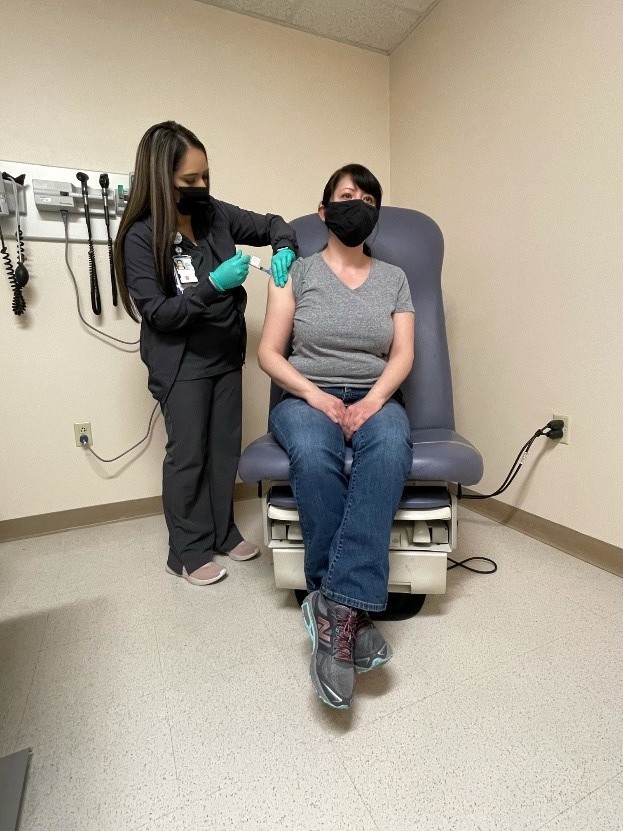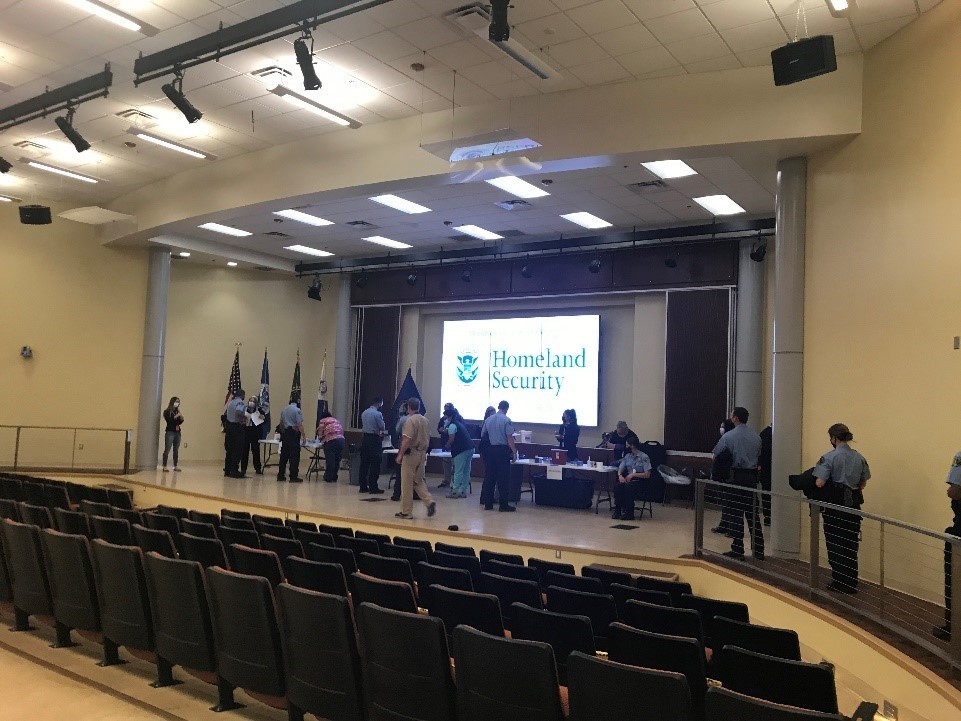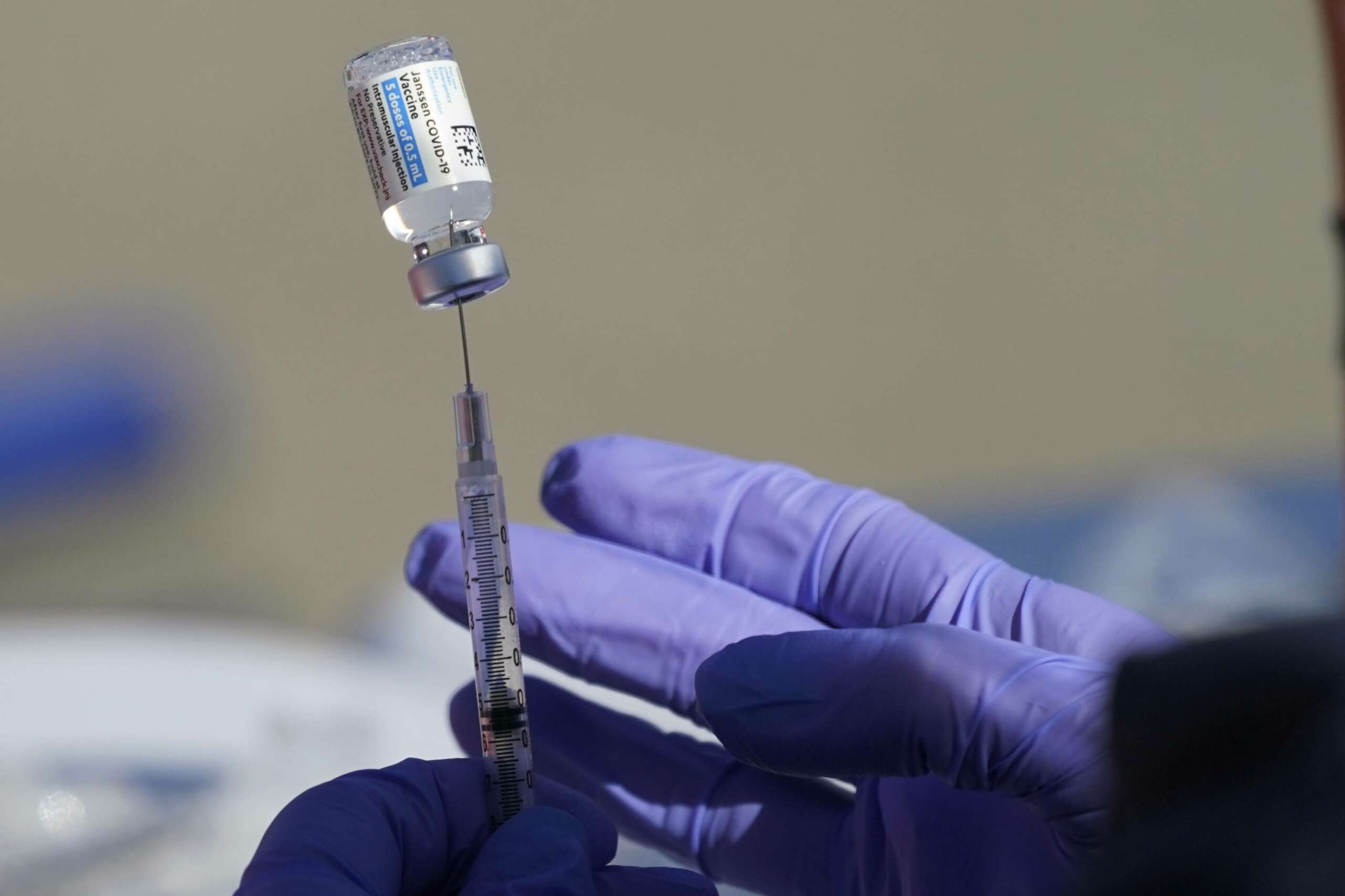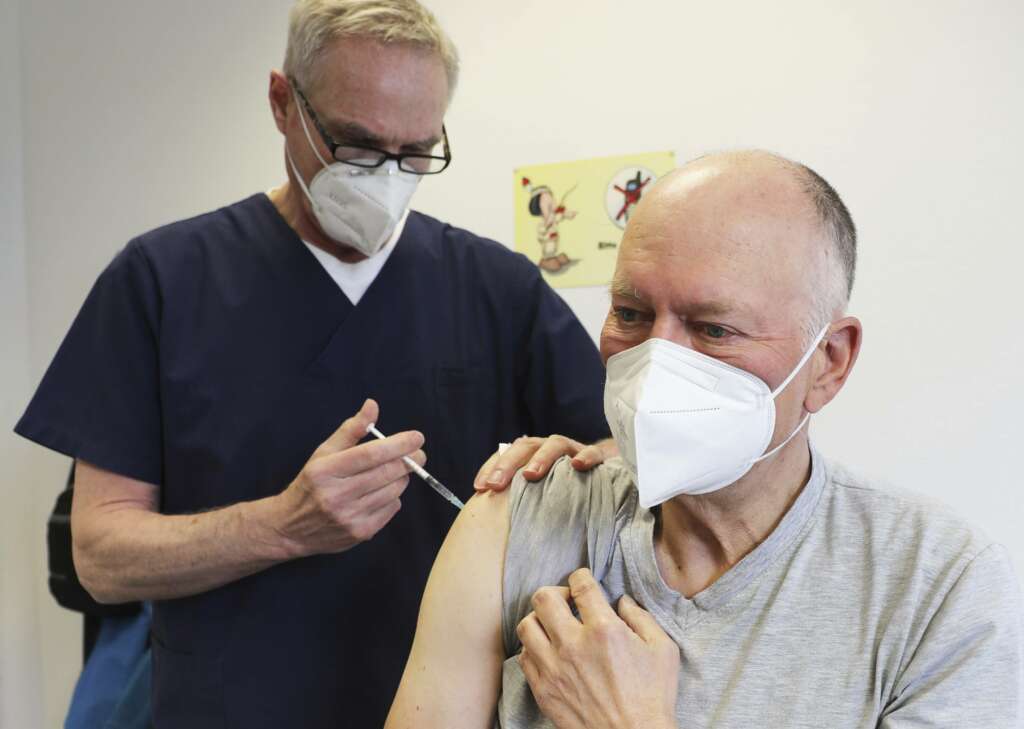If you are a federal employee working in the field, such as Food and Drug Administration inspectors, Forest Service rangers or Custom and Border Protection officers, getting a COVID-19 vaccine from your agency isn’t a sure thing.
The Department of Homeland Security is making an all-out effort to vaccinate all 300,000 employees.
Other agencies like the Agriculture Department or the IRS are asking employees to take a path through their state and local governments.
This inconsistent application of agency support for “frontline” workers to receive one of the three inoculations has the potential to create a have-and-have-nots among agencies.
Federal News Network surveyed 23 civilian agencies and several of their sub-agencies in February to gauge the steps they are or planned to take to vaccinate their employees.
For the most part, agencies pointed the questions back to the Office of Management and Budget for comments.
“Protecting the health and safety of federal employees is a top priority. A small number of agencies, like the Department of Defense and Department of Veterans Affairs, provide vaccines directly to their workforce and people under their care consistent with ACIP guidelines,” said an OMB spokesperson in an email to Federal News Network. “For the vast majority of agencies, their employees receive vaccinations through states and localities, pursuant to the prioritizations established by those jurisdictions. To assist states and localities, federal agencies were asked to identify a small subset of their workforce who are essential critical infrastructure workers and therefore might fit into categories that states and localities have prioritized. These include individuals engaged in emergency response, law enforcement, and health care. We are encouraging all federal employees to get vaccinated as soon as they receive an opportunity to do so.”
The inconsistent approach is leaving some agencies better prepared for the short term future of bringing employees not just back to the office, but into the field to work directly with citizens, businesses and around other mission areas.
DHS’ 80% goal
DHS, for example, set a goal of vaccinating 80% of its workforce in fiscal 2021. From CBP to Transportation Security Officers in the Transportation Security Agency to the folks inspecting cargo at ports from Immigration and Customs Enforcement, these are among the hundreds of thousands of employees that make up DHS and who interact with the public every day.

While vaccinations to COVID-19 are ramping up across the country, DHS, through its partnership with the Department of Veterans Affairs, said it’s making progress toward getting its frontline workers protected. As of April 5, the agency said more than 58,000 employees have received shots. This is up from just over 5,000 in early February.
DHS says this is just the beginning as the Veterans Health Administration now is providing vaccines to its employees at 163 medical centers, up from just eight on Jan. 6.
“There is no higher priority than the health and safety of our workforce,” said Secretary Alejandro Mayorkas in a release. “I am proud of the incredible progress that Operation Vaccinate our Workforce (VOW) has made in just two months, thanks to the dedication of the DHS and VHA personnel leading this effort. DHS is committed to protecting our employees by ensuring they have access to the safe and effective COVID-19 vaccines.”
While there is no governmentwide plan to vaccinate federal employees separately from the rest of the citizenship, several agencies are turning to VA for help to vaccinate its employees.
VA, NARA agreement to address backlog
VA announced on April 1 it has entered into a deal with the National Archives and Records Administration to vaccinate Archives’ staff who help VA process claims.
VA said it requires medical evidence obtained from military personnel records to adjudicate veteran claims for compensation and due to pandemic-related facility work restrictions, employee access to their worksites has been limited. These documents are only accessible through copies made available by NARA staff from their location in St. Louis, Missouri. Currently, there are more than 25,000 pending requests for personnel records.
“It’s crazy that we haven’t gotten the NPRC and the NARA folks who work in conjunction out in St. Louis, and then the Archives folks here in College Park vaccinated,” VA Secretary Denis McDonough told the House Veterans Affairs Committee late last month. “Using my authority, I said let’s get these guys vaccinated and get them back to work.”
VA’s role in vaccinating DHS and NARA employees grew in part because of its success with its own staff.
The department has fully vaccinated nearly 268,000 employees and nearly 1.7 million veterans so far, according to VA’s public data source.
Congress is pleased with the department’s work and recently expanded its authority to vaccinate all veterans, not only those enrolled in VA care, and their spouses and caregivers.
The Senate Veterans Affairs Committee has been pushing the Biden administration to give VA more doses and suggested the department could expand its assistance in reaching more federal employees.
At the same time, there are several other agencies ensuring their employees receive shots.
HHS to help critical infrastructure employees
The Department of Health and Human Services has opened up a mass vaccination site in Gaithersburg, Maryland to federal employees in the national capital area with certain critical infrastructure roles.
Agencies identified employees eligible for a vaccine based on their job duties and guidance on protecting the critical infrastructure workforce from the Cybersecurity and Infrastructure Security Agency, an HHS official said in an email to Federal News Network.
“This is a targeted program to vaccinate a limited number of federal essential critical infrastructure workers whose job responsibilities put them at greater risk from the pandemic,” the official said.
Only a subset of employees are eligible to visit the HHS site in Gaithersburg, and it’s unclear how many critical infrastructure workers will take advantage of the opportunity and how many have already received a vaccination elsewhere.
Government Executive first reported plans to open up a mass vaccination site to federal employees.
Leaders from the Washington metro area initially pushed for an HHS vaccination site for some 30,000 federal workers considered “essential” back in February.
The governors of Virginia and Maryland, and the mayor of Washington, D.C., wrote to HHS and FEMA in early February asking HHS to set aside enough doses for the region’s 30,000 federal workers who have priority for the COVID-19 vaccine. They asked HHS to set up and operate a central vaccination site specifically for essential federal workers.
State began vaccinations in December
A State Department spokesperson told Federal News Network that it did receive a vaccine allotment and plans to offer all employees the opportunity to be vaccinated.
“The department, via the Bureau of Medical Services, began administering its first tranche of the COVID-19 vaccine in December 2020, continuing with subsequent allotments every month as we receive additional doses,” the spokesperson said. “We make deployment decisions based on the data while taking into account complex logistical considerations. Overseas, the allotments factor in everyone under chief of mission authority, which includes contractors and eligible family members, as well as employees of other agencies and their eligible family members. To successfully deliver vaccines abroad, we designed a hub-and-spoke distribution plan to ensure doses arrive quickly while minimizing risk.”
The National Institutes of Health also is vaccinating its staff. A spokesperson said the Office of Research Services (ORS) in coordination with the Clinical Center and others are managing the effort with a goal of inoculating frontline staff who work onsite at facilities in clinical or essential operation positions first.
“We regularly and consistently communicate with our staff about where we are in the vaccination program and the information is easily accessible via the NIH Intranet site for staff, along with a broad range of other information related to NIH’s response to the coronavirus pandemic for staff,” the spokeswoman said. “Since the start of the pandemic, NIH launched and maintains an intranet site dedicated to staff guidance on COVID-19 that include NIH’s Vaccination Plan for Staff.”
Lack of centralized plan remains concerning
This inconsistent approach and the lack of a centralized plan from the White House also is causing concern from federal employee unions.
The National Treasury Employees Union (NTEU) said agencies have an added responsibility to those employees who work directly in the field.
NTEU has been pushing the IRS, as one example, to provide vaccines directly to employees.
“Employees required to report should have the opportunity to receive the vaccine,” Tony Reardon, NTEU’s national president, said in a statement. “At NTEU’s urging, the agency agreed to provide administrative time for employees to get vaccinated from state, local or other sources, even before such leave was provided by the American Rescue Plan. Better yet, it would be more efficient if the IRS could offer the vaccines for employees at their place of duty. And for those employees still teleworking, vaccines should be standard before they return to the office.”
Repeated attempts to ask the IRS about its plans to vaccinate its employees were not returned.
The Bureau of Prisons in the Justice Department is having the opposite problem. BOP says it offered the COVID-19 vaccine to all of its employees, but only 49% took the agency up on its offer. BOP says it can’t require employees to take the vaccine since the Food and Drug Administration hasn’t formally approved them yet.
IT, data show DHS the way
Part of the reason DHS is having success is they turned to their technology and data experts for help.
Beth Cappello, the deputy chief information officer at DHS, said in February at an event sponsored by MicroStrategy, that her office is providing system integration support to tie human resources systems with geospatial information management, health informatics and other core IT systems to manage the vaccination effort.

“The solution delivered by the OCIO leverages DHS infrastructure to authenticate employees in an opt-in system to obtain consent, to deliver important information about the vaccines and initiate the scheduling process,” she said. “DHS’s partner, VA, receives the scheduling request from the system and performs the vaccines within network of their healthcare system. This is an incredible priority for DHS and it’s an absolute privilege for OCIO to support this initiative.”
Kathleen Kaplan, the chief data officer at FEMA, said the DHS CDO council helped set data standards when COVID started in March 2020 and that has helped as the agency vaccinated more and more employees.
“If staff are close to a VA hospital, then they can go get their vaccine. But as you can imagine, the scheduling issues,” she said at a recent ATARC event. “The other issue is identifying employees who are not near VA sites or not near mass vaccination sites. We call them the vax dessert. So how are we going to get to those people to vaccinate them? You have to do the trade off on resources and the other stuff. The data portion is interesting because it’s all personnel identifiable information (PII). We have to have very stringent controls on that and who has access to that.”
Data sharing remains challenging
Coordinating patient data between the two departments has been a challenge, said Jane Kim, chief consultant for preventative medicine at VA’s National Center for Health Promotion and Disease Prevention.
VA is using its own patient record to register DHS employees who are interested in receiving the vaccine through the department. But once they are vaccinated, there are limits on what data VA can share back with DHS.
“It’s not such an easy thing,” Kim said last month at the Professional Services Council’s annual Federal Health Conference. “Once the information is on our side, the information on each individual employee becomes patient level information that is protected. We provide back to Homeland Security aggregate data on numbers of employees who have been vaccinated, but we cannot provide individual information back.”
Kaplan said DHS also is relying on data analytics to figure out how to connect employees with the opportunity to be vaccinated and what the agency’s next steps are to continue to make it safe to return to the office or work in the field.
Despite DHS applying technology and relying on data, the process has been far from smooth.
NTEU, which represents officers at Customs and Border Protection’s ports of entry, said the process of vaccinating frontline personnel was often slow and difficult, especially for those who don’t live or work near a VA facility.
“For those who were able to schedule appointments, we are grateful to the dedicated federal employees of the VA for providing vaccines to CBP employees in their areas,” Reardon said. “In many other cases, local CBP management, working with NTEU Chapters, also turned to state and local resources to obtain vaccines for eligible CBP employees. We believe DHS should have acted sooner in securing its own supply of vaccines for its workers, most of whom have jobs that require them to be on site, every day, interacting with the traveling public.”




